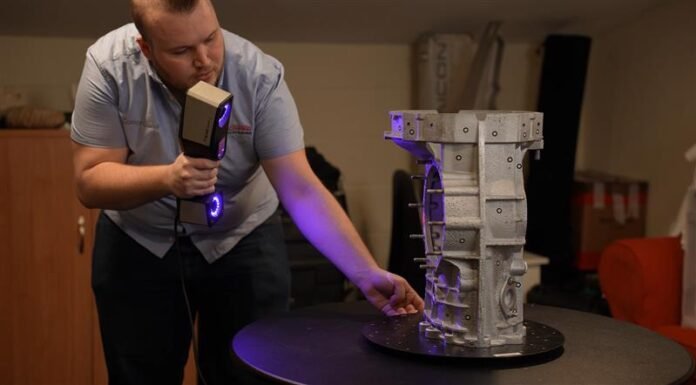Have you ever wondered how we recreate objects that no longer exist in production, or even those with no digital blueprint at all? That’s where reverse engineering comes into play.
Reverse engineering is the process of taking a real-world object and transforming it into a digital model, usually with the intent to recreate or improve it. Whether it’s an old part that’s worn out, a legacy component that no one makes anymore, or something that only ever existed in a 2D drawing, reverse engineering is often the only viable path to bring it back to life.
How Does 3D Scanning Work for Reverse Engineering?
Using 3D scanning technology, we can capture the shape and dimensions of an object quickly and with high accuracy. The scan produces a point cloud—a collection of data points in space that represent the object’s surface. This point cloud is then turned into a mesh, made up of tiny triangles that together form a digital 3D model.
Once we have this digital mesh, we can convert it into a CAD model, a format that can be used for manufacturing processes like machining, casting, or 3D printing.
But it’s not just about remaking what’s old. Reverse engineering allows us to modernise outdated designs by turning 2D references into functional 3D models, ready for today’s production pipelines.
Why Scan Data Is a Game Changer?
The biggest benefit of using scan data? Speed and precision.
Older methods of reverse engineering relied heavily on 2D drawings or manual measurements. They were time-consuming, error-prone, and often lacked the detail needed for complex parts. With modern scan data, we get an accurate digital model right from the start, dramatically reducing the need for re-referencing and re-measuring.
This is especially useful for capturing organic curves and complex geometries that are difficult (if not impossible) to recreate by hand. With high-quality scan data, engineers can fit surfaces directly to the scanned mesh and extract even the most intricate shapes with ease.
Beyond Manufacturing: The Many Uses of Scan Data
Scan data isn’t just about rebuilding broken parts. It’s also used in:
- Quality control & inspection: High-accuracy scanners can compare a manufactured part against its design to ensure it meets all tolerances.
- Digital copies: Creating accurate digital replicas of physical assets for monitoring, maintenance, and simulation.
- Marketing & content creation: Digital models can be used in movies, product demos, websites, and ads.
The Three Pillars of Reverse Engineering
Reverse engineering work typically falls into three main categories:
- Solid Modelling
This involves creating precise, geometric shapes in CAD software like SolidWorks. It’s ideal for mechanical parts and components. - Freeform Modelling
Think more organic—curved surfaces, sculpted shapes, and natural forms. This is commonly used in automotive and consumer product design. - Mesh-to-CAD Conversion
Not all CAD software supports mesh files, so converting a mesh into a CAD-compatible format (often called “shrink wrapping”) is key. This step ensures the model can be used for manufacturing, whether it’s machining wood or casting metal.
Real-World Applications
Reverse engineering is a lifeline for industries dealing with legacy parts, components that were never digitised or whose original designs have been lost over time. It’s also popular in customisation scenarios. For example, if someone wants to design a custom spoiler for their car, they won’t get a CAD file from the manufacturer. Instead, scanning the car allows them to design with confidence, knowing their custom part will fit like a glove.
Whether it’s preserving history, optimising manufacturing, or enabling creative new designs, this process is essential across industries. Speak to our team at Central Scanning today to discuss your project and how we can help.
